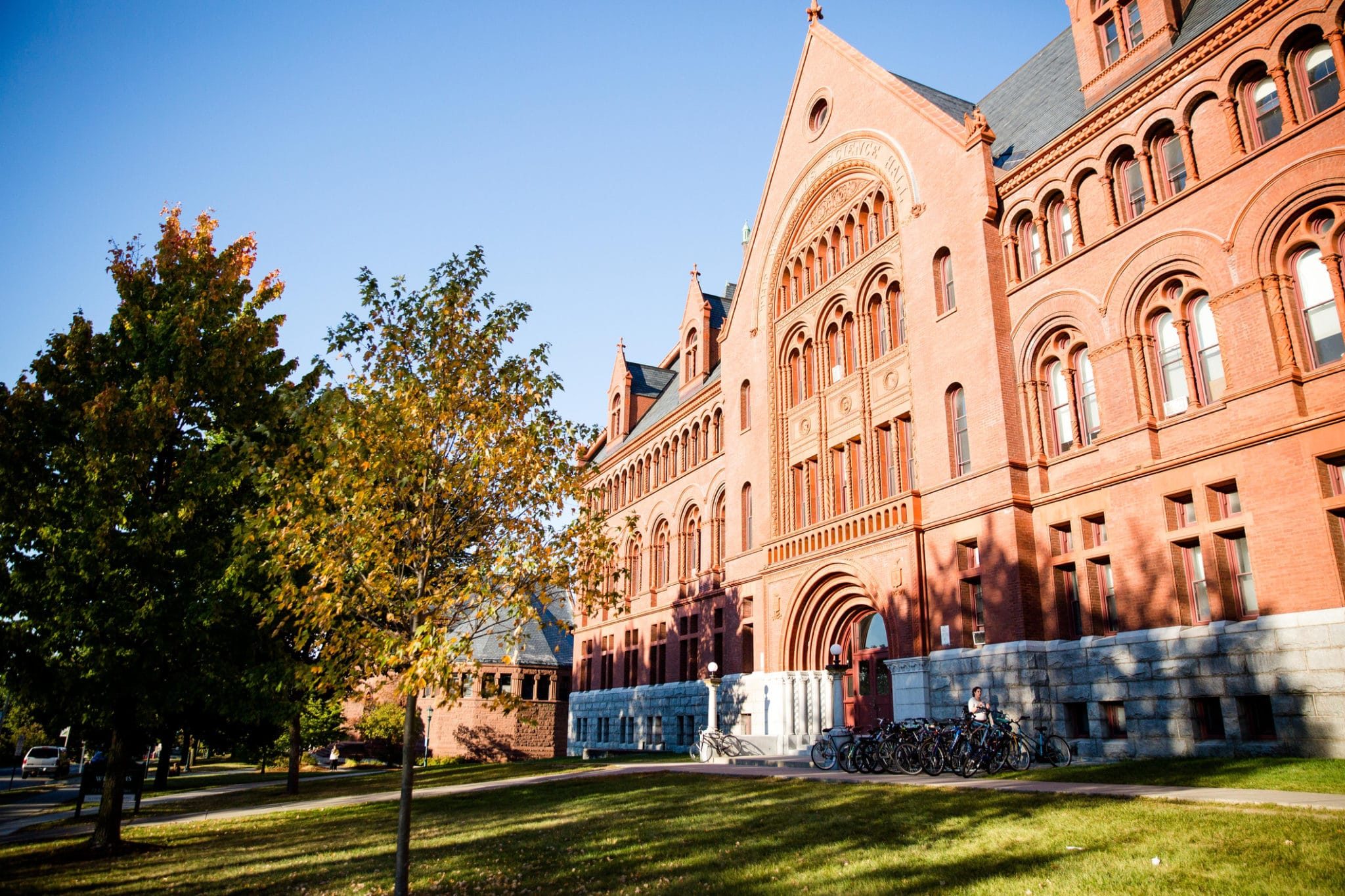Recently, Inside Higher Ed and Gallup published their annual survey of chief academic officers, and it contains some revealing findings about how academic leaders are thinking about faculty in 2020.
Based on survey responses from about 600 chief academic officers, representing over 300 public and over 250 private institutions (also 9 for-profit ones), the survey sheds light on many aspects of contemporary college and university life.
They asked CAOs what they thought about student attainment, political pressures, tenure, the economy, sexual misconduct, and even textbook prices.
Among these results are some various noteworthy indicators about the state of faculty employment in higher education today, which we discuss below:
- The first is about academic program data.
- The second is about faculty recruitment and hiring.
- The third considers the financial circumstances academic leaders are up against.
1. Chief academic officers are clearly feeling pressure to favor academic fields perceived as leading students to the workforce. At the same time, they are lacking confidence in the current state of data-drivenness on their campuses.
“60 percent [of all CAOs polled],” the study reports, “strongly agree or agree that politicians, presidents and boards are increasingly unsympathetic to liberal arts education. The same percentage of CAOs indicate they feel pressure from their president, board or donors to focus on academic programs that have a clear career orientation” (p. 23).
In fact, the study finds:
“Likely reflecting the trends in student majors, CAOs expect that there will be major allocation of funds to STEM fields and professional or preprofessional programs. More than 6 in 10 believe those fields will get major funding at their college in the next budget year. In contrast, just 31 percent strongly agree or agree that arts and sciences programs will get major allocation of funds in the coming year…” (p. 31-32).
Both these response outcomes and the presence of the question in the study, of course, reflect the long-running conversation in U.S. higher education about the most valuable ways that institutions should go about their mission—and also about how that value should be determined.
Yet we must note that the same academic leaders hardly voiced great confidence in their institution’s current capacity to use institutional data well. In response to a section asking, “How would you rate the effectiveness of your institution in the following areas?”, when it comes to “Using data to aid and inform campus decision-making,” only 23% of all chief academic officers surveyed (26% of those at public institutions, 18% of those at private) said “Very effective” (p. 12).
By what set of data, then, and through what data gathering channels, should academic leaders today determine which academic disciplines or programs to emphasize?
2. Chief academic officers not only doubt their institutions’ faculty recruitment and retention abilities, but are less confident in this area than they used to be.
On that same question asking chief academic officers to rate their institution’s effectiveness in various areas, the study seems to reveal a growing uncertainty about how to attract and keep the right faculty members.
When it came to “Recruiting and retaining talented faculty,” only 22% of all chief academic officers responding said “Very effective” (p. 12). The study further puts this data point in context:
“The percentage of provosts who believe their institution is very effective in recruiting and retaining talented faculty… is the lowest measured to date, and nearly half what it was from 2012-2014. The decline has occurred equally among private and public college administrators” (p. 7).
Achieving successful recruitment of talented faculty members—in a way that at once strategically fills an institution’s or department’s needs and ensures an equitable, responsible process—is an elusive quest.
To us, this revealing insight from the IHE/Gallup study certainly raises the question of the scale of resources and level of centralization that is in effect at the institutions whose academic leaders responded.
There is good news however, and that’s this: Many thinkers and scholars in higher education have become quite good at it—not to mention the beneficial rise of recruiting and HR professionals on staff. We heard some great sessions on effective academic recruitment in the 2019 Interfolio Summit, and are likely to hear more in the 2020 Interfolio Summit this July.
Editor’s note : If you or others you know in higher education wish that you could make faculty recruitment and hiring more strategic and systematic, perhaps consider pointing them to Interfolio’s step-by-step, research-based Modern Faculty Recruitment Playbook. (Brand new!)
3. Chief academic officers confirm the academic mission is struggling with a climate (and time) of scarcity.
The report reveals several noteworthy aspects of today’s chief academic officers’ perspective on their economic circumstances:
- They (still) acutely feel that resources are limited.
- They don’t think it’s been getting any better recently.
- Despite their support for tenure, they don’t feel they can reduce reliance on non-tenure track faculty.
Resources are limited
First, the study makes clear chief academic officers are feeling the limitations on their resources.
“When it comes to making decisions about creating new academic programs,” says the study, “70 percent of CAOs say that most new funds for academic programs will come from reallocation of existing funds rather than from new revenues.” Chief academic officers at public institutions reported this even this more strongly than their counterparts at private institutions.
“Additionally,” the report goes on, “the vast majority of provosts, 88 percent, agree that financial concerns are prevalent in their institution’s discussions about launching new academic programs” (p. 47).
It hasn’t been getting better
Furthermore, chief academic officers do not believe the financial situation has been getting better over time, and definitely feel that their institutions are still struggling with the effects of the 2008 recession.
“More CAOs disagree (43 percent) than agree (37 percent),” says the study, “that their institution’s financial situation has improved in the past year. A majority [50%] continues to disagree that the 2008 economic downturn is effectively over at their institution” (p. 7). On this question, too, the report notes that “public doctoral university provosts are the only subgroup that is more positive than negative about their college’s financial situation over the past year” (p. 46).
They (mostly) can’t reduce non-tenure track reliance
Likely for all these reasons, the chief academic officers who responded said they anticipate increased non-tenure track faculty reliance in the future—despite their affirmation of the value of tenure.
When asked, “In the future, do you anticipate that your institution will become more reliant, less reliant or will it be about as reliant as it is today on nontenure track faculty members for instruction?” (p. 16):
- Less than 1 in 10 of all chief academic officers polled (9%) said “Less reliant on nontenure track faculty members.”
- Over a quarter of all chief academic officers polled (28%) said “More reliant on nontenure track faculty members.”
- When it comes to those at private doctoral/master’s institutions, the portion who gave this response was as high as 40%.
And yet:
“At a time when 77 percent of CAOs say their institution relies significantly on nontenure track faculty for instruction — an increase of 12 percentage points since 2013 — a new high of 81 percent of academic officers strongly agree or agree that tenure remains important and viable at their institution. Compared with five years ago, both public and private college chief academic officers are more likely to believe that tenure remains viable at their institution.” (p. 15; emphasis added).
Clearly it is time to figure out how US colleges and universities should be recruiting, understanding, and managing a largely non-tenure track or contingent faculty workforce.
In this demonstrated climate of scarcity, then, there is more reason than ever for chief academic officers at US higher education institutions to find smarter, more sustainable, more systematic ways to support the academy’s overall mission.
***
Interested in what Interfolio has to do with these issues? Start with our free downloadable white paper on the Faculty Information System. Or just get in touch.

